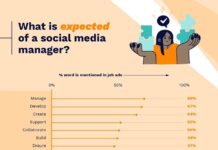Pew Research Center’s Project for Excellence in Journalism has gathered a year of data on the top news stories discussed and linked to on blogs and social media pages and seven months’ worth on Twitter, and has produced a rich report of data about the differences between traditional media and social media.
We summarize the findings likely to be of greatest interest to those interested in social media (with many thanks to the great summary from Pew) in this post, but for those interested in the impact of social media on the media, we highly recommend reading the entire report. Our summary below includes expanded detail from the Twitter section of the report:
Different lead stories
- Blogs shared the same lead story with traditional media in just 13 of the 49 weeks studied. Twitter was even less likely to share lead stories with traditional media agenda — the lead story on Twitter matched that of the mainstream press in just 4 of the 29 weeks studied. On YouTube, the top stories overlapped with traditional media 8 out of 49 weeks.
- Of the 29 weeks that Pew tracked on all three social platforms, blogs, Twitter and YouTube shared the same top story just once. That was the week of June 15-19, when the protests that followed the Iranian elections led on all three.
On Twitter, technology is a major topic focus — with a heavy prominence for Twitter itself — accounting for 43% of the top five stories in a given week and 41% of the lead items. (By contrast, technology filled 1% of the newshole in the mainstream press during the same period.) Still, the breaking news that trumped all else across Twitter in 2009 focused not on technology but on the protests following the Iranian election, which led as the top news story on Twitter for seven weeks in a row — a feat not reached by any other news story on any of the platforms studied.
Social media has a shorter attention span
- The stories that gain traction in social media do so quickly, often within hours of initial reports, and leave quickly as well. Just 5% of the top five stories on Twitter remained among the top stories the following week. This was true of 13% of the top stories on blogs and 9% on YouTube.
- In the mainstream press, on the other hand, fully 50% of the top five stories one week remained a top story a week later.
Blogs more likely to link back to traditional outlets; Twitter less so
- On blogs, 17% of the top five linked-to stories in a given week were about U.S. government or politics. On YouTube, they accounted for 21% of all top stories. More than 99% of the stories linked to in blogs came from legacy outlets such as newspapers and broadcast networks. Four outlets — the BBC, CNN, the New York Times and the Washington Post — accounted for fully 80% of all links.
- Twitter, by contrast, was less tied to traditional media. Half (50%) of the links were to legacy outlets, 30% to American legacy media; 40% to web-only news sources such as Mashable and CNET.
- 22% of content went to non-U.S. sites; 12% to the BBC.
- The news outlet that received the most links from Twitter (19%) was CNET. The majority of CNET stories (61%) were technology-focused, while 23% were about business issues.
- The second most linked to site was CNN.com at 17%. BBC News received 12% of the links from Tweets, and Fox News received 7%. Wired, a technology-focused magazine was fifth with 6%.
- 82% of the Twitter links went to news reporting, while 18% went to opinionated columns or stories.
- Twitter links also showed a greater tendency toward multimedia stories (almost one-fifth of the links). For example, on June 23, more than 500 tweets linked to a page that was primarily a photo collection produced by Boston.com of vivid images from the Iranian protests.
Methodology
The study examined the blogosphere and social media by tracking the news linked to on millions of blogs and social media pages tracked by Icerocket and Technorati from Jan.19, 2009, through Jan. 15, 2010.1 It also tracked the videos on YouTube’s news channel for the same period. It measured Twitter by tracking news stories linked to within tweets as monitored by Tweetmeme from June 15, 2009, through January 15, 2010.


